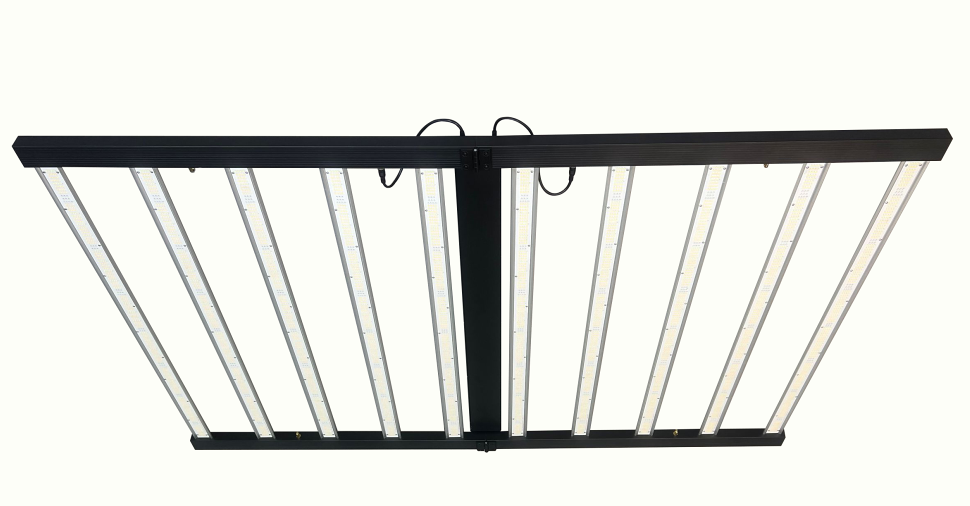If you wish to grow plants but live in an area with low natural light, you may choose to use LED grow lights. In some areas that may have long winters, plants have difficulty growing because they cannot photosynthesize. The next best option is to use LED grow lights, so if you are planning to buy some, here are some tips:
What plants are you growing?
Before buying indoor grow lights, you must know what you are going to use them for. Since their main purpose is to provide light that plants can use for photosynthesis, you need to know the kind of plants you will be growing. You will not be using it to provide bright lights in your home or anywhere else.
When you already know what kind of plants you want to grow, do some research. Find out what conditions they thrive in so that you can provide their needs. LED grow lights may have different features that affect the lifespan of the plant, and different plants react differently to various conditions.
How large is your growing area?
If you plan to grow plants at home, you may not need a large number of LED grow lights. However, if it is a large greenhouse, you will need several units. You need to know the surface area so that you can calculate the amount of light you should provide.
If the surface area is large, you might consider using multiple units so that each plant can receive enough light. Those directly under the light will not have a problem with photosynthesis because they will receive enough light. However, those away from a single light may have difficulty growing healthily.
How to judge the quality of LED plant lights?
LED plant fill lights are the cutting-edge solution for indoor plant growth today, especially bio-greenhouses. Therefore, when buying LED plant fill lights, you need to consider their durability, mainly the three parts of lamp beads, fan heat, and power supply. The structure must be of high quality, and low-end cheap and inferior lamps will waste your investment.
In addition to being affordable, you also need to find a device that does not flicker or generate too much heat. In order for plants to thrive, they need enough light, so if your light is constantly on and off, then the plants will not receive as much light as they need. Excessive heat can not only damage the device, but also damage it. Poor quality construction can cause overheating.
PAR
Photosynthetically Active Radiation, or PAR, is light that is beneficial to plants. It is a substitute for sunlight used by plants so that they can photosynthesize. LED plant growth lights can have different PAR values depending on the manufacturer. That being said, a higher PAR value doesn’t necessarily mean a bulb is better.
PAR should be evenly distributed between plants, which is why you need to know the surface area of your garden, as those directly under the light will receive more PAR, while those further away will not. The best LED grow lights you should consider are those that can evenly distribute PAR.
Make sure it has a suitable cooling system
LED grow lights can overheat, especially if you use them for at least 15 hours a day to provide enough light for your plants. As mentioned before, overheating can be harmful to your plants and the device itself. Therefore, your LED grow light should have an efficient cooling system.
Heat in LED bulbs occurs at the back, so there should be a heat sink in this area. It allows the heat to dissipate so it doesn’t overheat the device or plants.
Dimmable lights
It can be difficult to choose an LED grow light because many different brands make a wide variety of variations. Each product will have various features that may be a benefit or disadvantage to different users.
The best you will probably find is one that offers dimmable light. Dimmable LED grow lights are very effective because you can adjust them to your needs. You can set a schedule for when the lights turn on and off, so you don’t have to do it manually. Some even let you adjust the intensity and spectrum of the light so it’s right for the plants you’re growing.
Don’t Go Cheap
LED grow lights aren’t cheap. Regular LED bulbs for home lighting aren’t as cheap as incandescent or fluorescent bulbs, so for LED grow lights that can give life to your plants, you can expect them to cost a lot.
While you may find cheaper variants of LED grow lights, consider whether it’s really worth it. Sometimes, cheap doesn’t always save money because it’s inferior quality, which may even cost you more on repairs or replacements. So always go for the product that offers the best value.
Final Tips
LED grow lights are a revolutionary solution for growing plants. Relying on sunlight to grow plants isn’t always enough, especially for places that experience long, sunless winters. Now, you can even grow plants at home. So if you’re planning to buy an LED grow light, be sure to consider the above tips to find the best one for your plants.















